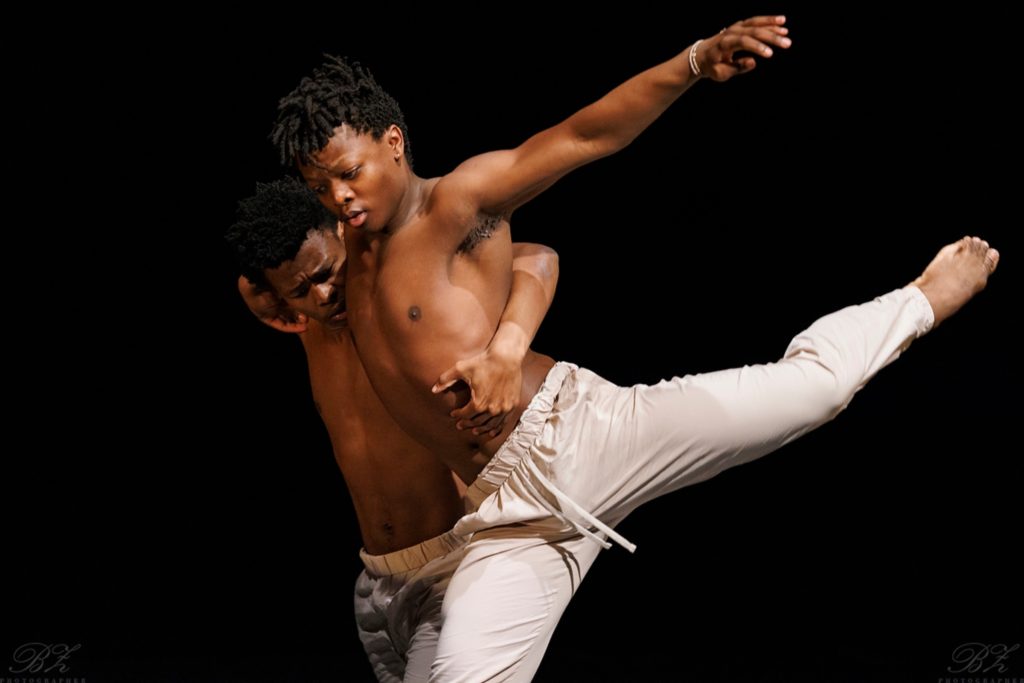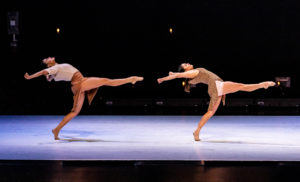Fall for Dance North: Thankful for a little bit of bliss - Vancouver Ballet Society
- Home
- Reviews 2020 - 2023
- Fall for Dance North: Thankful for a little bit of bliss

By Michael Crabb
Apart from the perennial issues of funding, one can only imagine the logistical challenges facing the organizers of an annual festival such as Toronto’s Fall For Dance North (FFDN) in the still unsettled wake of a disruptive global pandemic. Festivals are generally mapped out years in advance, often based on the international touring plans of target attractions. The hiatus in live performance caused by the pandemic with its postponements and readjustments, and now the slow return to touring, means options are limited. Additionally, the live performing arts in general are still working hard to build audiences back to pre-pandemic levels. Selling tickets, even at FFDN’s heavily underwritten flat price of $15 (plus fees), is a hard slog.
This may help explain why FFDN’s 9th edition, which ran September 26 to October 7, lacked the glamour and excitement of the festival’s five pre-pandemic seasons: there were no marquee names and, despite some excellent dancing, little choreographically either to surprise or delight.
To its credit, FFDN deftly negotiated the pandemic with a pivot to virtual programming and a measured return to a hybrid format that even now offers limited streaming options for those still wary of live attendance. Inspired by New York City Center’s Fall For Dance, the northern counterpart initially focussed on a compact series of performances but nowadays spreads itself to venues beyond its 3,200-seat Meridian Hall mainstage and includes Mambo, an associated podcast, along with a short-film component and satellite events in Toronto’s cavernous Union Station, and a late-evening emerging artists series called Night/Shift at The Citadel: Ross Centre for Dance.
This year, in search of a venue suitable for the kind of audience immersion/participation required for Charlotte Ballet’s remount of the tedious 20-year-old Ohad Naharin concoction, Kamuyot, FFDN ventured into a new space at Daniels Spectrum, a community cultural hub. One’s heart went out to these welcome visitors as their talent was fruitlessly expended on such audience-pandering and dated fare.
FFDN audiences, often newcomers to live dance, are traditionally indiscriminate and easily pleased. Standing ovations are de rigueur. The louder the music, the more viscerally ecstatic the movement, the more the audience loves it.

Vulgarity, apparently, is also a winner. How else to explain Heart Drive, Ballet BC’s enthusiastically received offering in the first of FFDN’s two mainstage programs? Dutch brother-and-sister choreographic combo Marne and Imre van Opstal have quickly become fashionable darlings of the Euro dance scene, noted for explorations of sexual desire and gender, but their 2022 work for Ballet BC is too light on heart and too heavy on drive. Forget about emotion. It’s all raw libido conjured in shiny black PVC and every pelvic thrust and contortion imaginable. The show’s most impressive element is Tom Visser’s quasi-holographic lighting plot. If this is the future of concert dance, heaven help us.
The same program introduced Canadian audiences to New York’s Gibney Company, a contemporary dance repertory troupe that moved into the international spotlight following a $2 million US gift in 2020 that enabled expansion into its current form featuring 12 dancers, officially known as artistic associates.

Having committed to bringing Gibney to Toronto, FFDN prudently got its money’s worth by featuring them on both mainstage Signature programs. The larger-cast work, Bliss, by seasoned Swedish-born choreographer Johan Inger, was a salutary reminder that contemporary dance doesn’t always have to be intellectually posturing doom and gloom.
Bliss — innocent, playful, yet choreographically sophisticated and meticulous — was made in 2016 but is redolent of a bygone era of American postmodern dance — think early Paul Taylor with a dash of Twyla Tharp. It responds with attentive musicality to Keith Jarrett’s famous 1975 Köln Concert solo piano improvisations. The overall mood has an unpretentious good-times feel to it. Dancers walk on and off but those walks can quickly ramp up to virtuosic levels in variously sized ensembles and dazzling solos. There is, perhaps, too little sense of purpose or motivation for what we are observing and the Jarrett score extends Bliss beyond its initial welcome. Even so, it shows Gibney Company to be a formidable group of movers, as audiences in Victoria, BC, will have the opportunity to observe when the company visits in mid-November.
Gibney Company’s dancers were equally admirable in Tony Award-winning choreographer Sonya Tayeh’s OH COURAGE!. Again overly long, this 2021 work is set to the indie rock music of New York City-based husband-and-wife duo The Bengsons (Shaun and Abigail). In its original format, The Bengsons performed their music live on Rachel Hauck’s set — four theatrical light stands at the corners of a cluster of loudspeakers. Apparently they’d planned to do the same in Toronto but were prevented for health reasons.
With a recording as substitute, the work seemed uncentered and adrift. Tayeh rose to fame as a choreographer on Fox TV’s So You Think You Can Dance and it shows: too much sizzle and precious little steak. Struggle appeared to be a prevalent theme but against what was never clear. And those flashing lights! Is it ever OK to half blind an audience or, worse still, trigger an episode?

Sometimes the ovations were fully merited, as was the case with My Mother’s Son, a duet that for the first time in live performance on a professional stage brought together from London and Toronto respectively the Zolani, South Africa-born dancer-brothers Mthuthuzeli (Ballet Black) and Siphesihle (National Ballet of Canada) November.
But for the pandemic, it would have happened much sooner and in 2021 was presented as part of FFDN’s then virtual season in a memorable film by Canadian director Vikram Dasgupt, still available to view on Vimeo. Newly costumed and theatrically lit, and with some changes to Mthuthuzeli November’s choreography — Dasgupta’s camera could travel in a way live audience members cannot — My Mother’s Son speaks to the pain of geographical separation and the enduring bonds of fraternal love. The emotion is almost disconcertingly intimate, never forced or acted. Magnificently performed by two outstanding artists, the duet transcends the personal to achieve universal resonance.

